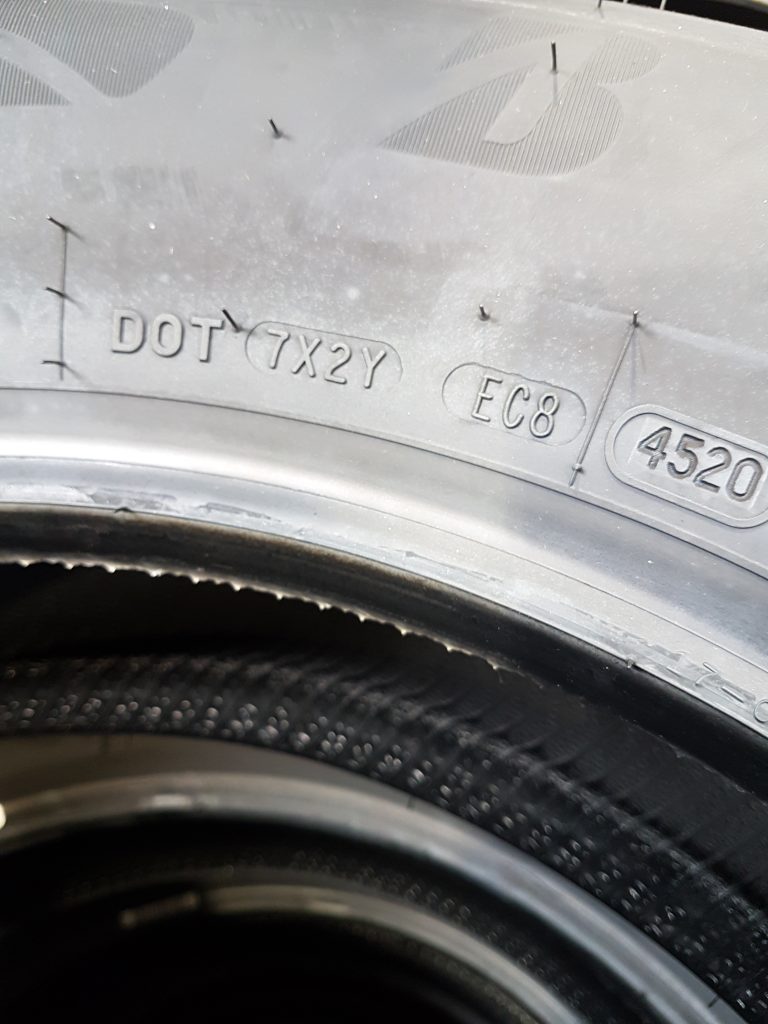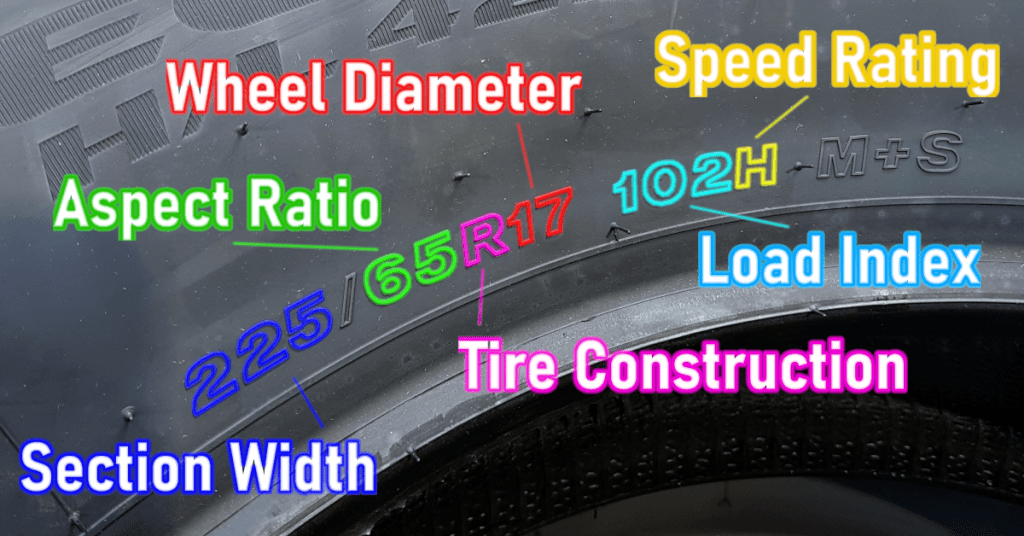In this post, we have a couple of tips from a tire expert about buying tires, we explain how tires are measured and show you how to read your vehicle’s tire size by breaking down what each part of the tire code means. We’ve also included links to some online tools that you can use to compare tire sizes and to see what options are available for your vehicle’s wheels.
Top tips from the pros
Braidan Wheel & Tire has been providing tires and wheels to the Greater Toronto Area since 2006. I asked Nadia Shimbashi at Braidan what advice she would give to someone buying new tires.
Nadia’s top tip: Check the date the tire was manufactured. Old tires may look new and have a deep tread depth; but could have been manufactured so long ago that the rubber has begun breaking down to the point of being unsafe (we show you how to check tire age later in this post). This is not so much a concern when purchasing from a reputable tire shop. However, it’s buyer beware when buying tires privately.
Her second tip is to listen to the advice from your tire shop. If they have been around for a while, they can tell pretty quickly where danger lies. “People sometimes think they’re getting ripped off when they come in to replace a front tire and we tell them they need to replace both sides.” Replacing just one side will often cause an uneven ride and could cause control issues. “If it’s dangerous,” Nadia says, “we won’t do it.”
How tires are measured
The three measurements that determine a tire’s size are:
- Width (section width)
- Height of the sidewall
- Size of wheel rim it will fit
If you have a look at the sidewall of the tires on your vehicle you will see a number that looks something like P225/65R17 102H, with the tire’s width, height and wheel diameter reflected in the first three numbers.
Tire size meaning – decoding the codes
In the example above, “225” indicates the tire is 225mm wide; “65” tells us the height of the tire’s sidewall the tire is 65% of it’s width—or 146.25mm; and “17” lets us know it will fit 17-inch wheel rims. Easy, right?
So, now, when you are speaking to the tire sommelier at your local tire shop, and she tells you she doesn’t have any 225/65R17s, but she has some 165/90R17s that will fit, you will know that the tires she is talking about will be 60mm narrower with sidewalls that are 2.25mm taller.
The other numbers and letters provide insight into additional characteristics of the tire:
- Tire Class – the type of vehicle the tire is designed for
- Tire Construction — what it’s made of
- Load Index – the maximum amount of weight the tire can carry
- Speed Rating – the maximum recommended speed for the tire
Returning to our example above, the “P” means this tire is designed for passenger vehicles. An “LT” here would mean it’s meant for light trucks. The “R” means the tire is constructed with a steel, radial belt inside to give it strength (pretty-much every tire manufactured these days is an “R”). The “102” is the load index number, and tells us the tire can carry a maximum load of 1,874 lb—as opposed to a 99 load index (1,709 lb) or 109 load index (2,271 lb). Which brings us to the “H” in our example—meaning this tire is H-rated, or designed for speeds up to 210 km/h.
Date of manufacture
The DOT code (look for “DOT” on the tire sidewall) provides information about the company, factory, mold, and batch the tire came from, and is great bedtime reading if you are having trouble falling asleep. Yet, this is perhaps the most important code on a tire because it also provides the most important thing you want to know about a tire—the date it was manufactured.
See, the problem with rubber is it ages. To understand why this is an issue, try using a 10-year-old pencil eraser, and you’ll get the idea. Although some tires are reputed to last up to 10 years, caution dictates tires older than five years should be avoided.
To figure out when your tires were manufactured, look for the last four digits in the numbers/letters of the DOT code.

These represent the week and last-two digits of the year the tire was manufactured. For example, in the code, 7X2Y EC8 4520, the “4520” indicates the tire was manufactured in the 45th week of 2020. Note: Tires manufactured before 2000 used only one digit to designate the year. If in doubt as to the age of a tire, consult a tire shop you trust.
Choosing the right tire size for your vehicle
Okay, now that you know what the numbers on the side of your tires mean, How can you use this information when purchasing tires? We’ve got you covered with the handy cheat sheet below that includes things to consider when purchasing tires:

Know your tires / Know your options: Some handy, online tools
Tiresize.com is one of the best tools out there for all things tire-related. You can enter your vehicle information to find the default tire size your car; and then click on an Alternate Sizes button to see what other sizes will fit.
With Tire-calc.com you can compare two tire sizes and get large, side-by-side images of the tires in order to see how the width and sidewalls change with different tire sizes. It will also provide warnings to let you know if a tire size you are planning to change to could be dangerous.





